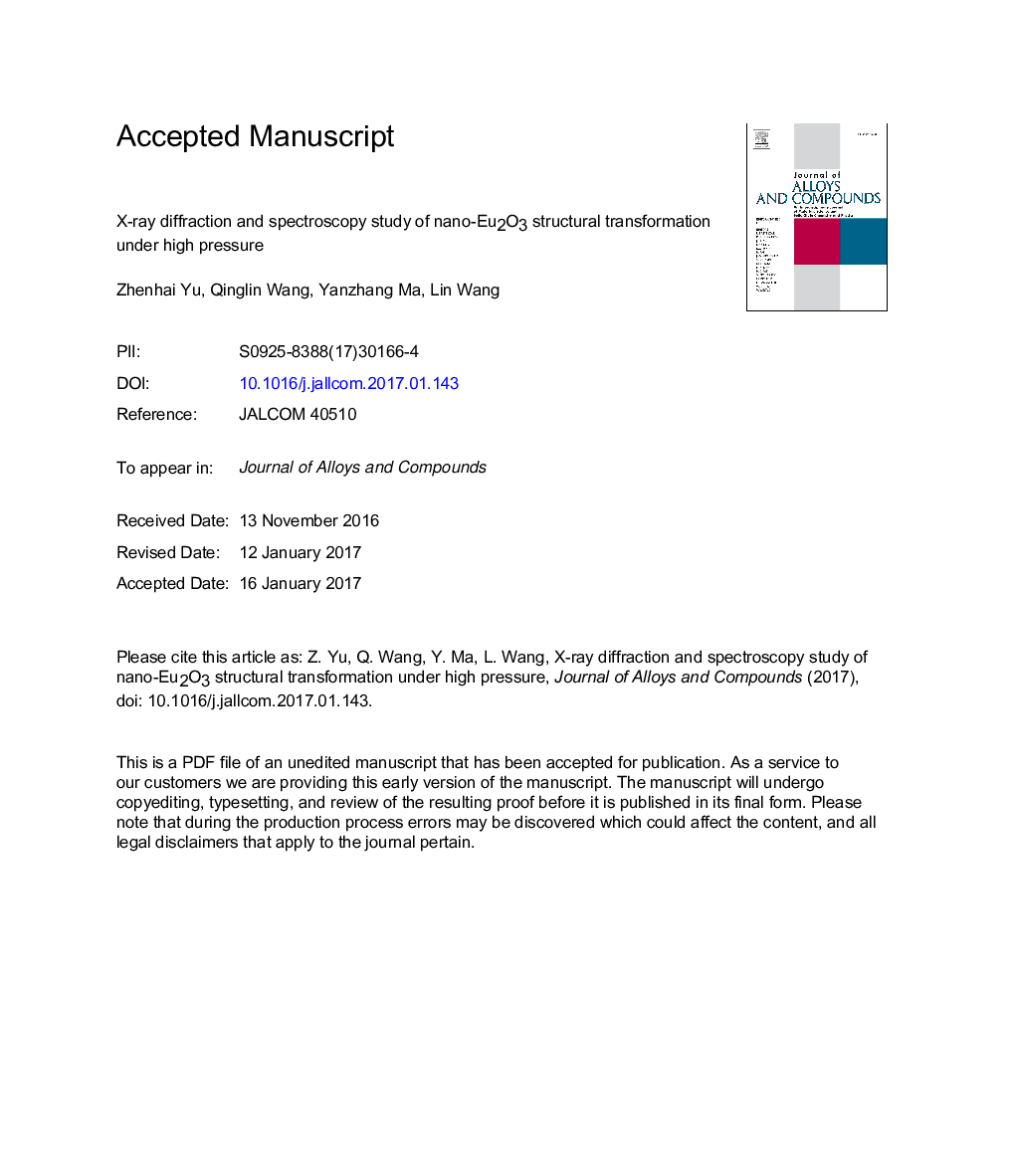| Article ID | Journal | Published Year | Pages | File Type |
|---|---|---|---|---|
| 5460230 | Journal of Alloys and Compounds | 2017 | 28 Pages |
Abstract
Nanoscale materials exhibit properties that are quite distinct from those of bulk materials because of their size restricted nature. Here, we investigated the high-pressure structural stability of cubic (Câtype) nano-Eu2O3 using in situ synchrotron Xâray diffraction (XRD), Raman and luminescence spectroscopy, and impedance spectra techniques. Our high-pressure XRD experimental results revealed a pressure-induced structural phase transition in nanoâEu2O3 from the Câtype phase (space group: Ia-3) to a hexagonal phase (Aâtype, space group: P-3m1). Our reported transition pressure (9.3Â GPa) in nano-Eu2O3 is higher than that of the corresponding bulk-Eu2O3 (5.0Â GPa), which is contrary to the preceding reported experimental result. After pressure release, the Aâtype phase of Eu2O3 transforms into a new monoclinic phase (Bâtype, space group: C2/m). Compared with bulkâEu2O3, C-type and A-type nanoâEu2O3 exhibits a larger bulk modulus. Our Raman and luminescence findings and XRD data provide consistent evidence of a pressure-induced structural phase transition in nano-Eu2O3. To our knowledge, we have performed the first high-pressure impedance spectra investigation on nano-Eu2O3 to examine the effect of the structural phase transition on its transport properties. We propose that the resistance inflection exhibited at â¼12Â GPa results from the phase boundary between the Câtype and Aâtype phases. Besides, we summarized and discussed the structural evolution process by the phase diagram of lanthanide sesquioxides (Ln2O3) under high pressure.
Related Topics
Physical Sciences and Engineering
Materials Science
Metals and Alloys
Authors
Zhenhai Yu, Qinglin Wang, Yanzhang Ma, Lin Wang,
